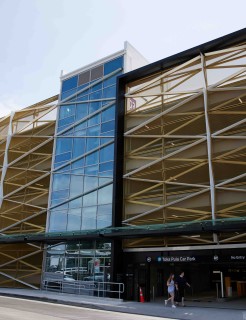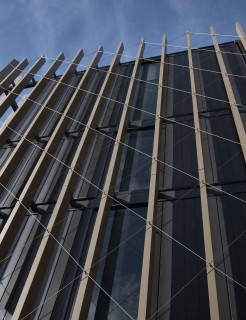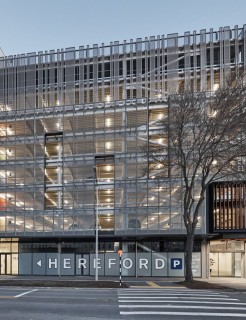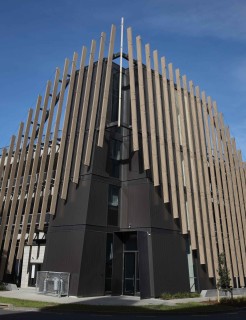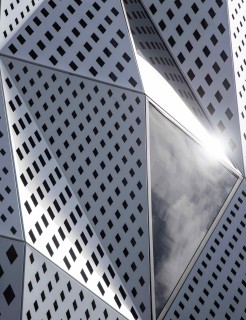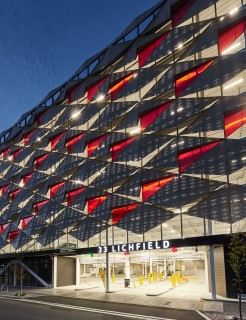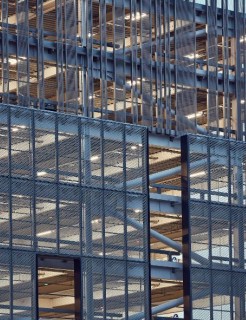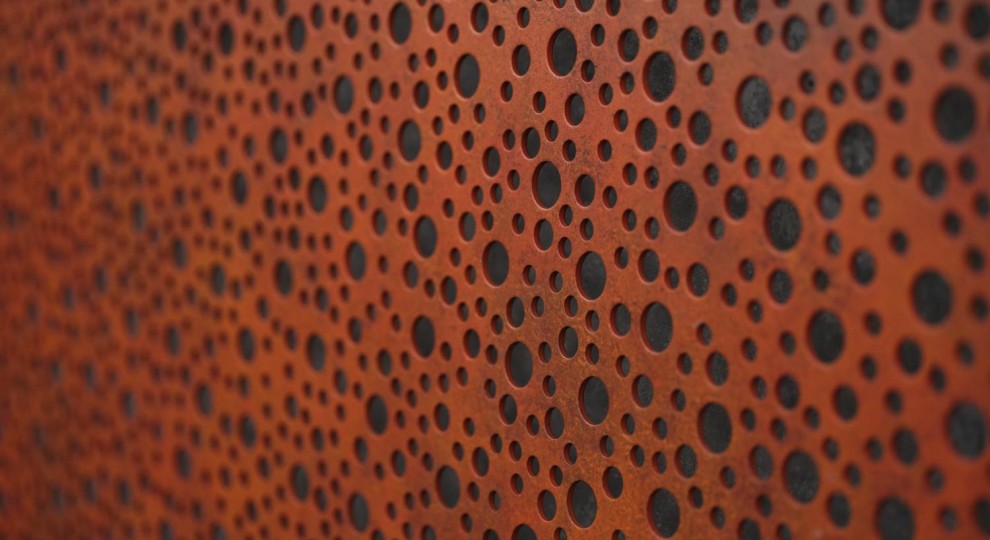
How Perforated Panels Influence What You See
Perforated aluminum can be beautiful. We’ve worked on multiple projects where the perforated panels established the character of the building, adding the aesthetic appeal that draws wandering eyes to its shape and form.
If asked to describe the panels, it's easy to accurately describe what can be seen. What would be more difficult would be describing why you can see it. How the perforated panels influence what you can see is more complicated and the combination of open rate, color and lighting will all influence the final aesthetic
Influencing Color Perception
Perforated panels will influence the perception of colors behind them. As light passes through the open parts of the panel or reflects off the panel itself, it can alter the way colors appear. Depending on the pattern used, the angle of the panel in relation to the sun, and the color of the powder coat finish, the visual perception of color will change. Think of it as the panel adding a filter overtop of the color behind.
This happens because the pattern and powdercoat color choice subtly alters the hues of light that reach the surface behind them. Colors reflect different wavelengths, absorbing the rest, and as this happens the reflected light will impact the perception of color any anything it lands on. So even though perforated aluminum is obviously not transparent, the reflected light will be affected enough as to change the perception of any color it shines on. Altering the size and spacing of perforations will then change the visible color hues further.
Influencing Privacy Levels
The choice of screen color can also influence privacy levels. Lighter colors will make the screen appear to be more solid and will reduce the extent to which it’s possible to ‘look behind’ the perforated screen.
What’s happening is the reflected light from the panels is brighter than the light behind them, effectively drowning out whatever might be otherwise viewable. It’s the same as trying to look into a dark room from the bright outdoors. The reflected light from the window will obscure whatever is in the room, making it hard to discern shapes and colors in it.
Of course, the flip side is also true. If the building behind the facade is lighted, then that light will shine through the perforated panels and seemingly increase what it's possible to see. It’s really the same as the net curtains that became increasingly popular in Victorian England, lasting well into the 1980s. Almost unfailingly made in bright white (at least until they generally withered to a tobacco stained yellow) they worked by reflecting sunlight to obscure what went on behind closed doors. Occupants concerned with their privacy would still have normal curtains or blinds though, knowing that at nighttime the dark suburban streets would eagerly absorb the light inside the home and passers-by could see more of what was going on inside.
Of course, there are other factors influencing what can be seen through a perforated panel when looking from the outside, the most obvious being the open area. Reducing the open area generally tends to reduce visibility and increasing it…well, that increases visibility.
Open rate should not be confused with hole size (aperture). Smaller holes can allow near perfect visibility if there’s enough of them. And smaller holes at closer centers are less effective at screening than larger holes at wide centers, even if both patterns have the same open area percentage.
Another important consideration affecting privacy is proximity between the viewer and the perforated pattern. Generally speaking, the greater the distance between the eye and a perforated panel, the less can be seen through it. For building occupants, the opposite is true and the facade becomes a sort of giant pair of stenopeic glasses, blocking direct sun for shading but affording a relatively uninhibited view of the outdoors.
Using Perforated Panels to create a Picture
We’ve concentrated on the smaller, less obvious ways perforated panels can influence what you see so far. Yet we should also mention how perforated panels have the ability to create relatively detailed pictures.
By cleverly using different open rates, it’s possible for the perforated panels to take the form of a picture. It’s important to take background lighting and viewing distance into account when designing the image, with a positive image relying on a dark background, whereas an inverted image requires the use of artificial lighting from behind.
For the size of the holes, the design needs to establish where the optimum viewing position will be. For example, creating a picture with perforated panels for passers-by needs to factor in the distance between any walkway and the panels themselves.
Examples of Perforated Panels
We’ve worked on various projects where perforated panels have been used to create a unique aesthetic, offer privacy or shading. The following have been selected to highlight different types of panels but if you’d like to view more, please visit the case studies page.
Les Mills Parking Garage
A unique 3 dimensional profile twinkles after dark as the lights from the car park shine through the custom made panels with diamond shaped holes.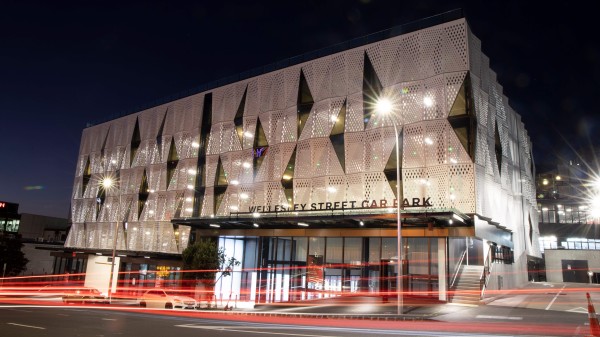
Alexandra Park Stage 2
The façade screen is formed from 3mm aluminum sheets finished with a white powder coating. The custom dapple pattern is made up of random rectangle perforations that are backlit to display a light show that slowly evolves through the night.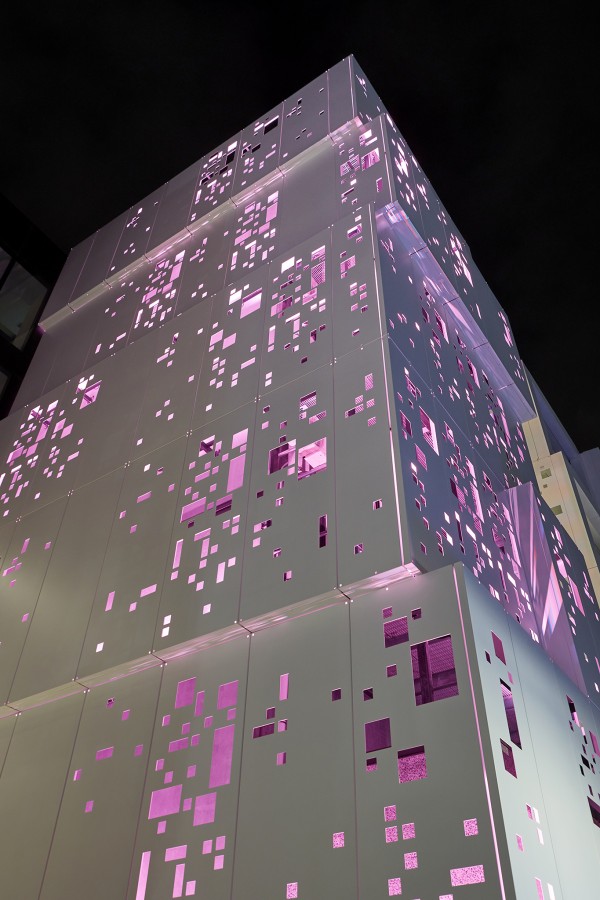
Ormiston Town Center
A custom variation of the dapple ‘lightshade’ pattern carefully follows the contours of the parking ramp and powder coated in that burnt orange, the dappled light accentuates the entrance and exitway as it snakes its way from inside to outside. 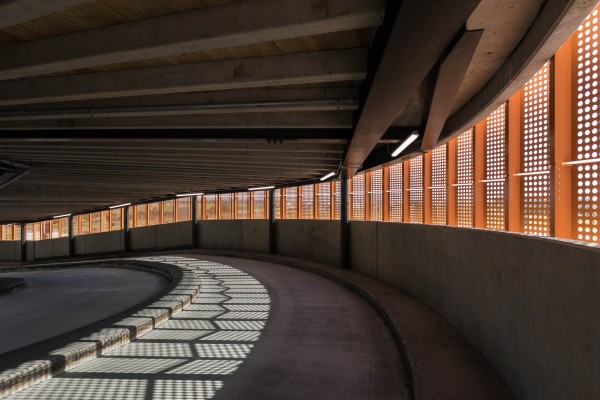
Te Kura o Manunui
White perforated screens featuring a standard dapple Hexagonal perforated pattern, contrast against the dark colored brickwork behind and provide shading for teachers and students. 
Windy Ridge School
A custom dapple design uses different open rates to cleverly portray depth, creating a scene that changes, depending on your viewing angle and the time of day.
Mairangi Bay Pump Station
The perforated screens show two local Pohutukawa trees, twinning the real greenery sitting behind the pump station.
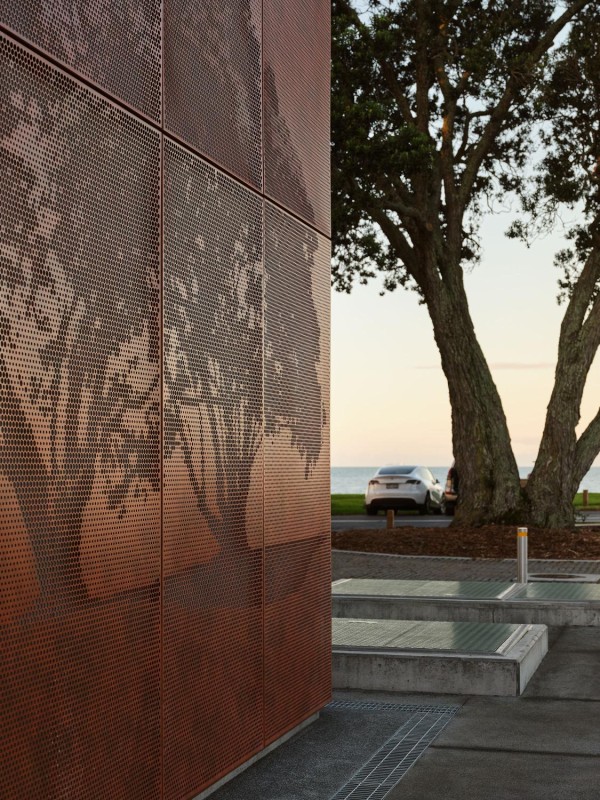
If you’d like to learn more about perforated panels or discuss options for your project, please contact us. We’d be happy to help.

